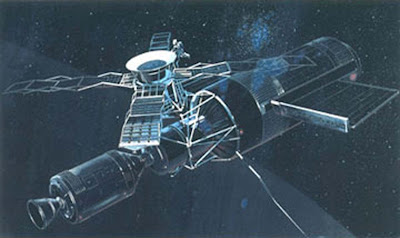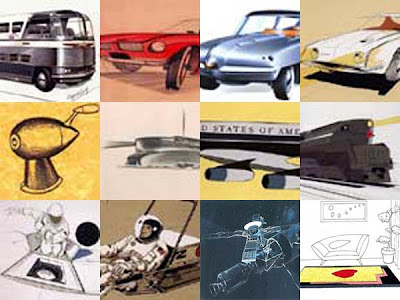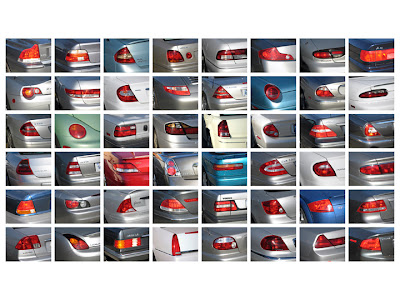Rendering for Industrial Design: A Look at Raymond Lowey
About This Drawing:
Raymond Lowey created this Skylab rendering on a dark indigo blue background. Line work is done mostly in white pencil and highlights are white gouache paint. The background color is very much a part of the object. See how much of the paper actually shows through the object. Refined details, like parting lines, fasteners, surface texture, and a strong indication of light direction give the viewer plenty of significant information. Notice how the drawing is done in three-point perspective, close to the horizon line, with the vanishing points far off to each side. This effect gives the object a convincing, life-like appearance, as it is one of the most familiar ways one encounters or sees the world around them.
Drawing Tips:
1. Allow the background color to be an active part of the drawing. Avoid overworking the surface. Keep the drawing fresh and unlabored, providing only important information.
2. Include a variety of details that help the viewer understand the object, including clues regarding material, function, texture, weight, scale, volume, and context. Whenever it makes sense to do so, include an indication of human scale, as it will lend volumes of information to the piece.
3. For a convincing portrayal of drawn objects, be aware the principles of perspective. Place objects in the center of the cone of vision and close to the horizon line.
4. Including light and shadow in the drawing will help the viewer understand the figure ground relationship, time of day, light source, and three-dimensional volume.
If you would like to work on this technique, use a Canson toned paper (or similar), Prismacolor colored pencils (or similar), pastel powder mixed with baby powder and gouache.
About Lowey:
“The Shell logo. The Greyhound bus. The S-1 locomotive. The Lucky Strike package. The Coldspot refrigerator. The Studebaker Avanti. These and many other modern design icons were all created by Raymond Lowey, "the father of industrial design." Arguably one of the most influential designers of the 20th century, Loewy has been called the "man who shaped America." He left his mark countless times on everyday culture from household products, to transportation to corporate identity. Loewy was one of the first designers to understand the link between design and the economy. He expressed this connection by stating: "Between two products equal in price, function, and quality, the better looking will outsell the other."
Raymond Loewy (1893-1986), a brilliant designer and, without doubt, the most versatile ambassador of this discipline, became a design legend in his own lifetime. He was the most influential protagonist of industrial design that North America has ever known and has had a significant impact on the tastes and lifestyles of several generations. Loewy’s design philosophy still has an influence on the industrial design world today.” – This brief excerpt is from Art Net. See http://www.art.net/Lile/loewy/loewy.html


 Amy Leidtke
Amy Leidtke

